







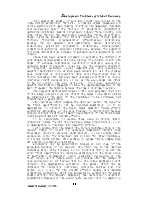
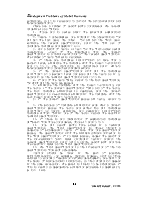




















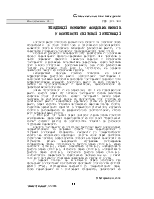


























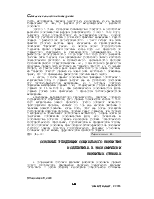

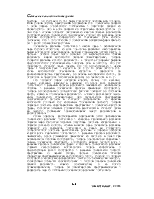
|
УДК 339 |
Goncharuk S. |
THE Role of Nongovernmental Organizations in Reaching the Millennium Development Goals
In globalization epoch the world community is concerned with the problems of the XX century. With the object of solving these problems and forming the strategies of the world development in the XXI century, on September 6 – 8, 2000, the Summit of the Millennium was held. At the Summit 189 countries undertook obligations to reach by 2015 the following goals:
1) to eradicate extreme poverty and hunger;
2) to achieve universal primary education;
3) to promote gender equality and empower women;
4) to reduce child mortality;
5) to improve maternal health;
6) to prevent HIV/AIDS, malaria and other diseases;
7) to ensure environmental sustainability;
8) to form a global partnership for development.
Government and nongovernmental organizations (NGOs) work in Ukraine for reaching the millennium development goals (MDG). However, there is an urgent problem of deficient financing of these organizations, and, as a corollary, low efficiency of their activity. Owing to the deficit of the Ukrainian state budget, foreign capital should be attracted. It is necessary to highlight a great role of NGOs both in the work aimed at reaching the MDG, and obtaining foreign donors’ funds.
One of the sources of financing NGOs are grants — nonrefundable financial assistance of a special-purpose character. In order to obtain a grant, a NGO should submit on a competition basis an application and the necessary folder of documents by a specified date. The list of the documents can be different depending on the demands of the donor, the value of the grant and the term of the project implementation. As a rule, the folder of documents includes: a detailed project description, where the problem to be solved in case of the project implementation is stated; the project goals and objectives; a calendar plan of the project implementation; resumes of the people managing the project; technology of the project results evaluation; the budget of the project with the description of the articles; letters of support from the organizations interested in the project implementation; the statutory documents of the organization initiating the project. At the end of the project implementation term, the NGO should submit a report to the donor organization. The report includes project and financial parts. The project part contains photo, video, electronic and paper materials. The financial part consists of the folder of documents submitted to the donor organization and tax inspection, confirming target use of funds.
In April 2002 a commission of experts of the Global Fund for the Prevention of AIDS, Tuberculosis & Malaria (GF) ratified one of the most successful projects developed by NGOs together with the government of Ukraine. According to the project agreement the GF will allocate to Ukraine the funds in the amount of $ 92 million within 5 years for treatment, care and support of the HIV-positive patients, and for these diseases epidemic prevention.
The project program includes four components:
1) information & educational activity;
2) lowering the risk of infecting the representatives of vulnerable groups with HIV;
3) providing the treatment, care, and support of the HIV-positive patients, diminution of negative consequences of HIV / AIDS epidemic;
4) development and introduction of a monitoring system of HIV / AIDS epidemic management, monitoring and evaluation of the program of preventing HIV / AIDS.
Table 1
The Project Financing by the Global Fund
|
Components |
Year 1, ths US$ |
Year 2, ths US$ |
Year 3, ths US$ |
Year 4, ths US$ |
Year 5, ths US$ |
Total, ths US$ |
|
Component 1 |
2 500 |
3 650 |
5 450 |
5 000 |
3 410 |
20 010 |
|
Component 2 |
523 |
1 372 |
1 901 |
1 900 |
1 951 |
7 648 |
|
Component 3 |
5 561 |
10 217 |
17 190 |
16 904 |
11 663 |
61 535 |
|
Component 4 |
451 |
697 |
583 |
590 |
640 |
2 960 |
|
Total |
9 034 |
15 936 |
25 124 |
24 394 |
17 664 |
92 153 |
As follows from the table 1, for the first three years the total sum of project financing and financing of each separate component will increase. The growth for the second year will reach 76%, and for third one — 58%. Financing the project in 2006 will remain at the level of the third year, and in 2007 it will decrease from $ 24.4 mln. to $ 17.7 mln.
Уважаемый посетитель!
Чтобы распечатать файл, скачайте его (в формате Word).
Ссылка на скачивание - внизу страницы.